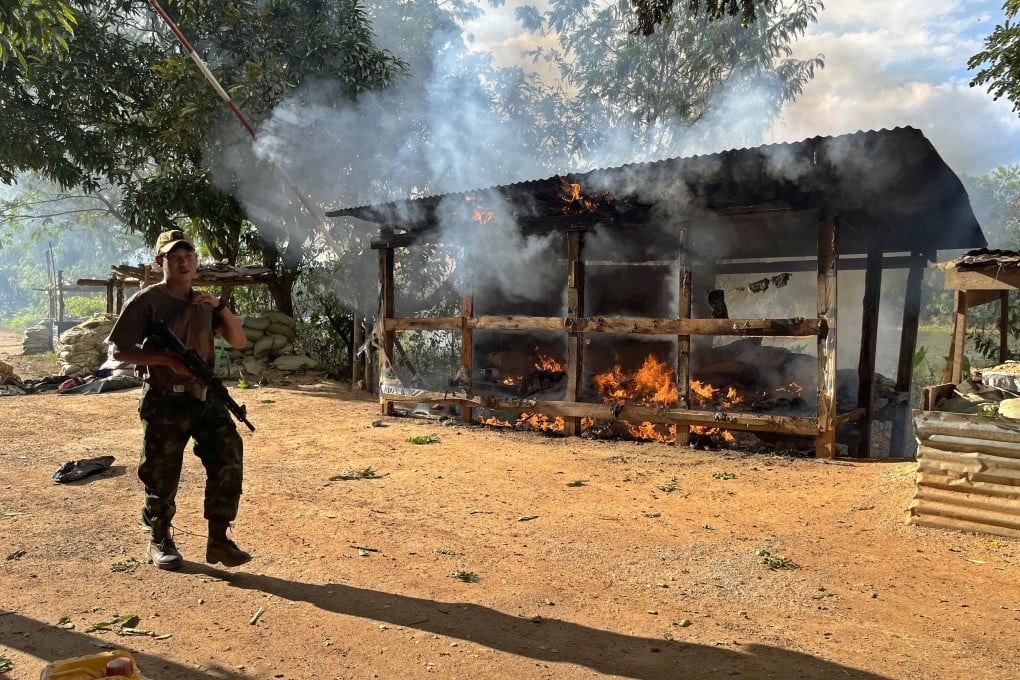In Myanmar’s ‘fight to the death’, it’s the junta and its warlords vs everyone else
- The country is in the grips of one of the world’s most violent conflicts amid deep rifts within the military – and Asean’s response

Aye, a 32-year-old former tour guide from central Myanmar, is typical of many who made their way from cities to the jungle training camps of numerous ethnic armies when the Tatmadaw, the country’s military, turned its guns on protesters demanding a return to representative government. The soldiers killed hundreds of mostly peaceful demonstrators, wounding and imprisoning thousands more. “We came from the dark into the light,” Aye said, referring to reforms introduced after an entrenched military government conceded some space to civilian rule in 2011. “The generals would take us back into darkness, so we must fight … to the death if necessary.”
Fighting since October has seen significant rebel successes and Aye is optimistic victory will soon allow her to return to a peaceful life. But her optimism is likely misplaced: this is a brutal conflict marked by deep ethnic animosities, shifting allegiances and criminal activity now generating billions of dollars for the junta and its warlord allies. The revolutionary alliance, meanwhile, remains confronted by a well-armed, ruthless and increasingly desperate adversary in a strategic country at risk of being consumed by flaring rivalry between superpowers, which poses the greatest threat to regional peace in half a century.

‘For my comrades’
Aye scans the goods on offer at a makeshift market pressed hard against coiled ribbons of sharpened steel that mark this part of the border between Myawaddy and Mae Sot, and across which traders sell cheap smokes and alcohol, dried seafood, and items of clothing. It is a surreal scene, with Thai soldiers deployed on their side of the frontier generally ignoring traders who routinely slip through gaps in the razor wire to exchange goods for highly prized Thai currency.
Aye haggles an acceptable price for packets of cheroots: finger-thick, filter-less cigars that are a powerful reminder of home. “For my comrades,” she says en route to a small frontier village nearby, as clouds of dust are barely suppressed by a sprinkling of early wet season rain that would usually signal a lull in the fighting across the border. But ambushes and skirmishes continued last month as the rebels resisted junta attempts to reopen Asia Highway 1, which pushes deeper into Myanmar from Myawaddy through the nearby Dawna Range.
A group of men who are set to return to combat soon sit on the veranda of a ramshackle bungalow savouring Aye’s cheroots in the presence of “Teacher”, a small man with the body of a kickboxer. Teacher has been a soldier with the Karen National Liberation Army (KLNA) for 12 years, fighting the Tatmadaw since he was 20. He has trained this group of “commandos”, all of whom hail from the urban centres of Myanmar’s lowlands.

Formerly a driver, 34-year-old Myo has been with the KLNA for two years. He gingerly massages his right thigh, where a still-healing 10cm shrapnel wound from a recent battle for Myawaddy is clearly visible. Another fragment smashed the mobile phone in a pouch covering his heart, likely saving his life. Myo’s “brother” Zayer, a 33-year-old former sales executive, has been with the KLNA for 2 1/2 years and has fought in a number of battles, including the assault on Myawaddy in which a close friend was killed. “He was shot in the chest. I carried him for 20 minutes to a safer place, but then he died.”